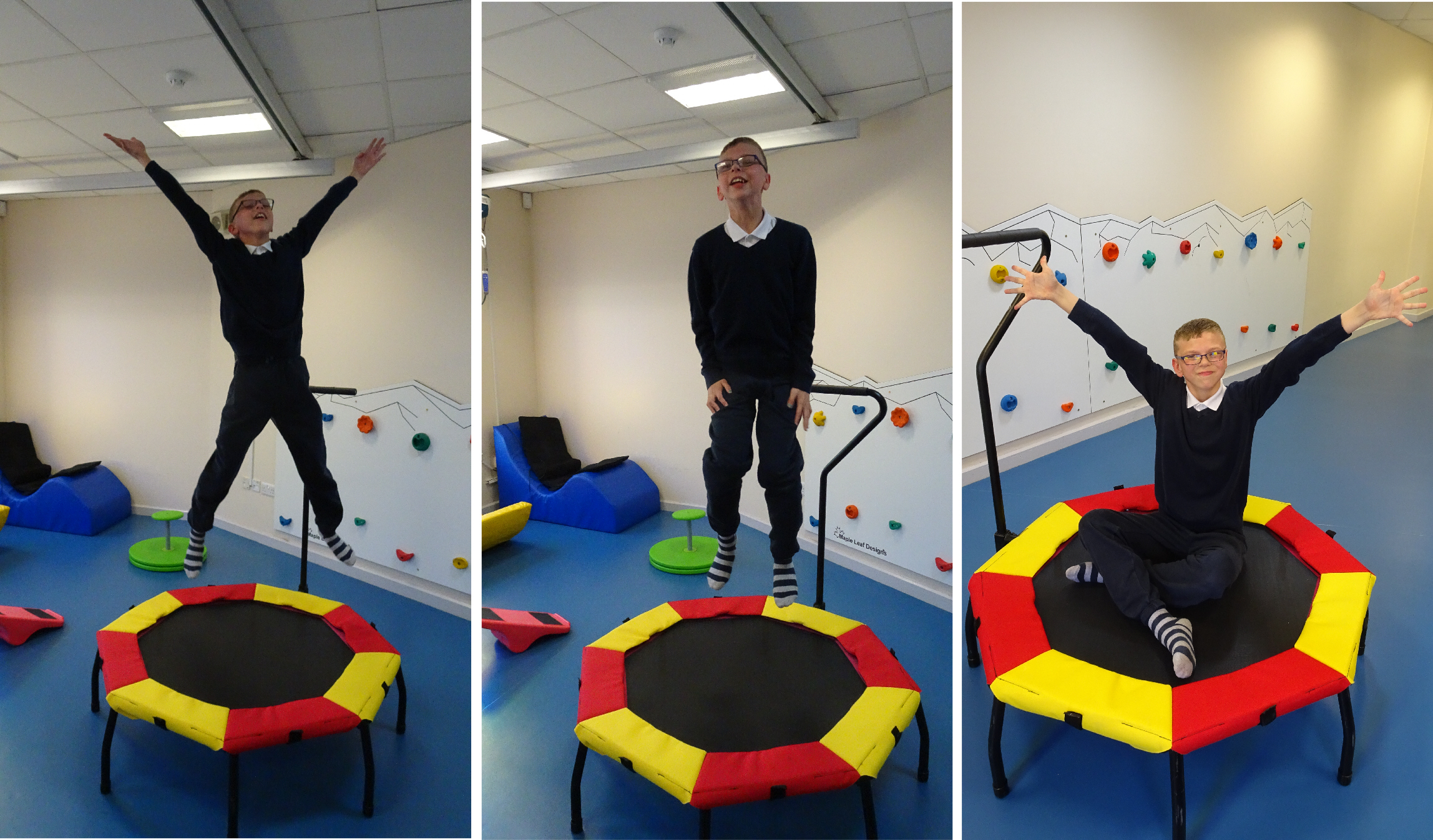
- 'IN-HOUSE' REBOUND THERAPY COURSES (where we come to your school or centre to provide the training)
- 'OPEN' REBOUND THERAPY COURSES
- 'OPEN' REFRESHER WORKSHOPS
- 'OPEN' REBOUND PLUS and beyond ADD-ON COURSES
- ONLINE COURSES and Extension Workshops
- For training courses outside the UK please visit:
www.ReboundTherapyInternational.com
FLEXI-BOUNCE THERAPY
WHAT IS FLEXI-BOUNCE THERAPY?

FLEXI-BOUNCE THERAPY, Making Therapy Fun - Every Day!
MOST TEACHERS AND care staff, who provide Rebound Therapy, know of the benefits and would like to be able to provide it on a daily basis.
CURRENTLY, A COMMON issue for many special needs schools and centres is that they can only provide Rebound Therapy sessions once or twice a week due to their number of students and only having one or two full sized trampolines. And during holiday times, sessions stop altogether.
Some schools and centres are not able to provide Rebound Therapy at all because they do not have the budget or space for a full sized trampoline.
FLEXI-BOUNCE THERAPY is the solution to this dilemma. ReboundTherapy.org who are the UK based worldwide federation and consultancy for Rebound Therapy, have developed a programme of use and development, using an orthopaedic quality rebounder so that students and service users can benefit from fun therapy in any convenient space at school between their weekly Rebound Therapy sessions, and at home in the evenings, at weekends and during holidays.
FLEXI-BOUNCE THERAPY can provide many of the huge numbers of benefits of Rebound Therapy, for children and adults across virtually the whole spectrum of disabilities and additional needs.
BENEFITS INCLUDE the development and improvement of: Strength of limbs, Numeracy, Patience, Communication, Muscle tone, Eye contact, Relaxation, Trust and confidence in Teacher/Carer, Colour recognition, Height and depth perception.
And, most importantly; FUN AND ENJOYMENT.